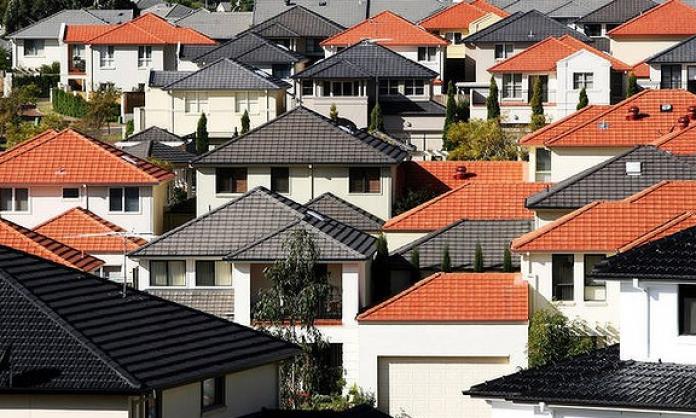Private residential property is one of the most important institutions of Australian capitalism. It geographically atomises the working class and structurally underpins the family. It is a means of discipline and exploitation through mortgage debt. It is a site of capital investment and speculation, and an engine of economic growth.
The distribution of private allotments of land had always been part of the colonial project. More than 40 percent of households were occupied by their owners by the turn of the 20th century. In Western Australia, the colonial secretary in 1911 described homes as “fortified castles for the working man” – a gesture toward the social and economic stability that property was meant to provide.
Private provision of housing for the labouring class was institutionalised by the Harvester judgment of 1907, which included the price of shelter in the basic wage and underpinned the “wage earners’ welfare state” for the next century, establishing that workers would provide housing for themselves through the market.
The 1930s Great Depression, the consolidation of the Stalinist dictatorship in Russia and the rise of Communist parties in the West prompted some to consider more fully the role of property in social engineering.
In 1942, Robert Menzies spoke of “homes material, homes human, and homes spiritual”. In his view, ownership would foster patriotism through people gaining “a stake in the country” and create a material base for anti-collectivist individualism in a society strictly ordered by the state. “The home is the foundation of sanity and sobriety”, he said; “it is the indispensable condition of continuity; its health determines the health of society as a whole”.
Relatively high rates of ownership facilitated by government subsidies predated the Second World War. Under Menzies’ postwar stewardship, the ideal of the self-sufficient home as locus of family and nation was given reality as economic reconstruction took shape and the long boom took off.
From the mid-1950s, the Commonwealth-State Housing Agreement encouraged home ownership via the provision of low interest loans to home builders and the sale of houses on highly concessional terms. Some 30 percent of all Commonwealth funds were set aside to promote owner-occupation.
Public housing was also sold to tenants at this time: between 1956 and 1963, the NSW Housing Commission sold 80 percent of all houses that it constructed.
Australia built the highest home ownership rate in the world – growing from just over 50 percent of households in 1947 to 70 percent 14 years later; it has hovered around that level ever since, dropping only slightly to about 67 percent in recent times.
There is no evidence to suggest that this provided the basis for political conservatism in the way that Menzies and other right wing politicians hoped. (If it had, the industrial upsurge of the late 1960s and early 1970s would not have been possible, occurring as it did at the peak of owner-occupation).
Residential property nevertheless has become a key social anchor. As an atomised unit of society, it reinforces the alienated existence of capitalism and shapes domestic life in a way that is almost impossible to avoid. For a long time it went hand in glove with marriage. Today, the latter is not of great importance. For example, plenty of people choose not to get hitched. But this by and large is irrelevant to social reproduction because an urban geography built for cohabitation has been firmly established.
Those who proudly affirm their independence from the constraints of married life, who eschew the formal recognition granted by the state or the church, nevertheless find a “partner” and bow to the contract of the estate agent or the financial institution, whose endorsement is more difficult to obtain. (Any two drunks can have their nuptials witnessed and confirmed by an Elvis impersonator in Vegas; the bank will make a more sober and detailed assessment of your life before approving a mortgage.)
As one observer notes, “a home is a ‘family home’. Whilst family life changes rapidly, there seems amazingly little change in the ways people link home to private family life, and the proper steps on the family ladder”.
If anything, property’s place in the national psyche has been strengthened as it has become naturalised, even if the associated utopias, such as domestic bliss and suburban paradises, have not often materialised.
A typical attitude to home ownership was expressed by one inhabitant of a new suburb in a capital city surveyed in the 1990s: “It’s the done thing … It just sort of came naturally. The obvious thing is to buy a house and own it”. Another similarly said, “I don’t know that I could give you a reason for wanting to. I suppose it’s just like, as they say, the great Australian dream. It’s just something you do”.
This is not simply a ruling class conspiracy. Many factors influenced the increase in ownership, making it a rational choice for many. The point is that people’s choices were and are radically constrained, and their preferences constructed. Governments have been deliberate in how they subsidise accommodation, and they privilege private ownership above all other options.
While ownership mostly remains out of reach for the bottom 40 percent of households (and increasingly so), the determined structure of domestic life, the growing divide between the private realm of the home and the social world of work, market dependency and the commodification of the private sphere are a reality for all.










